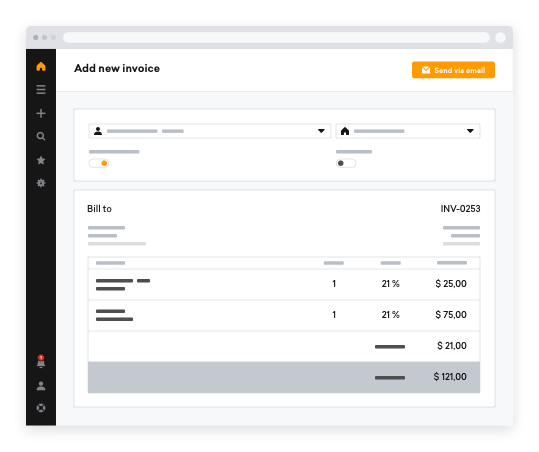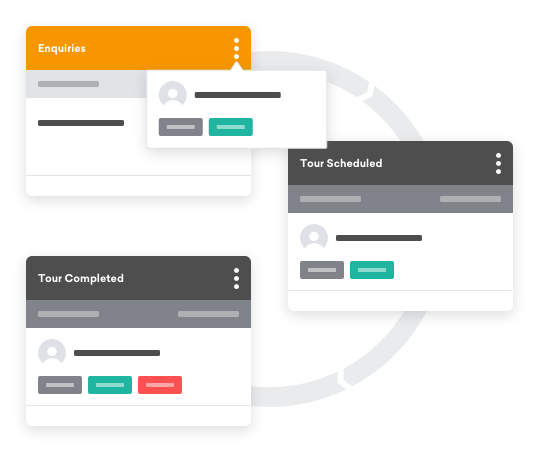Flexible workspace software – 10 ways to improve the member experience
Coworking has come a long way since the first known coworking space – C Base, a community for coders – was founded back in 1995. If you’re interested in finding out more about how coworking has evolved, check out this nifty coworking timeline.
It provides a detailed insight into coworking spaces past and present.
Today, there are coworking spaces in every major city. Once the domain of freelancers and startups, these collaborative workplace communities are now attracting larger clients too. In short, the coworking concept is thriving.
When coworking really started to gain traction, around 10 years ago, software companies began to design innovative solutions to help coworking operators run their increasingly occupied spaces more easily. Companies like Nexudus.
We started out just over a decade ago, founded by Adrian and Carlos, and we’ve been adapting our product to meet the needs of our flexible workspace customers ever since.
What is flexible workspace software?
Flexible workspace software – also known as coworking software – is technology that enables flexible workspaces to manage their daily operations and improve the member experience. It’s a must-have that saves time and resources.

Think of it as a kind of control hub from which to manage all the different aspects of the workspace, from meeting room bookings to newsletter mailouts, customer billing to reporting and analytics, parcel deliveries to dynamic pricing. Our solution is also white-label, allowing you to add your own colours and branding to the user interface. In other words, it blends in seamlessly with the rest of your website.
Flexible workspace software by Nexudus
No flexible workspace software is exactly the same.
Nexudus has a comprehensive selection of features, each designed to help flexible workspace operators provide quality member and employee experience.
We run a monthly subscription model and integrate with hundreds of other tech solutions. As well as various tutorials and guides, there’s also a helpdesk for customers to use when they need support.
So, what are Nexudus’ main features?
1. Memberships
One of our core features is memberships. Nexudus facilitates automatic customer payments and invoicing, reminders, and weekly, monthly and yearly renewal plans. It also integrates with over 100 payment processors.
Our Membership functionality makes life easier for coworking staff and members alike. Time spent on chasing payments and the admin involved with renewals can be reallocated to more value-added tasks like events planning and content creation.
2. Events and Bookings
No flexible workspace is complete without meeting room booking software. Fortunately, Nexudus is able to handle meeting room bookings too and integrates with a range of calendars, including Google.
You can set the pricing according to the type of membership, room type and length of meeting. Your customers can book meeting rooms online or on a tablet situated outside the meeting room itself.
3. Member Onboarding
Member onboarding is also made easy with Nexudus’ flexible workspace software. You can create signup forms and customise them according to your needs and branding. Customer data is stored directly in your database. Members can also buy add-ons through their account and store their card details for ease of payment.

4. CRM
Nexudus’ customer relationship management system provides you with a way to keep track of visitors and guests, and manage tours. It also acts as a hub for your leads by allowing you to keep track of customer activity, from their first interaction with your coworking brand to the moment they sign up, and beyond.
5. Email Monitoring
Email can be a great medium for keeping members and followers updated with what’s going on in your space. You can use your flexible workspace software to send and create newsletters and keep track of engagement rates. Again, Nexudus integrates with other email providers – including Mailchimp.
6. Access Control Systems
It’s important for coworking operators to have control over who can access the building, and members and visitors need to be able to access the building and the rooms within with ease.
Nexudus integrates with a host of access control systems. Managers can define access levels and issue limited-time codes for drop-ins. Members can also gain contactless access using their mobile devices.
7. Virtual community features
Lots of organisations have adopted hybrid working since the pandemic, which is why we’ve developed features for virtual communities as well as physical ones. To be fair, most of these were in place before the pandemic hit. Members can make use of discussion boards and feeds and helpdesk features, for instance. You can also use Nexudus to send out surveys to your members and get valuable feedback.
8. Members directory
The Members Directory is one of Nexudus’ most exciting features – for members, at least. When a member joins they can choose to be part of an online community by creating a profile and joining community boards and discussion groups. Users can filter by categories like ‘skills’, which makes it easier for members to find and collaborate with each other.
9. Reporting
Flexible workspace software can help you from a strategic point of view too. You can create reports based on different variables to keep track of how your space is performing and identify areas of improvement.
There are so many things you can create reports for, including KPIs, occupancy, check-ins, bookings, surveys, discounts and many more.
10. Extra features
We’re always evolving and adding new features to our roster. Take Automation Tiles, for example. These handy tiles can be placed anywhere in your building and will automate daily tasks like meeting room check-ins.
Meanwhile, the NexDelivery app allows you to manage deliveries to your coworking space, automatically notifying the relevant person when they receive a delivery. Then there’s Dynamic Pricing, which analyses your account data and automatically amends your desk rates to ensure your workspace stays competitive.
If you’re interested, in learning more about the Nexudus platform and what it could do for you and your workspace, don't hesitate to get in touch with us. A member of our team will be more than happy to give you a complete guide to everything Nexudus can do.
Related stories
Liz Elam: ‘Community is the number one amenity in coworking spaces’
A household name in the global coworking industry, Liz Elam, is the founder of one of the world’s best coworking event series: GCUC. Liz’s coworking roots began in 2010, when she established Link Coworking – a welcoming, affordable, and professional coworking space – in her hometown of Austin, Texas. Link Coworking achieved incredible success, expanding across three locations and becoming the fourth-largest coworking brand in Austin. It was sold in 2019, making Liz the first woman globally to exit a coworking brand.
Key Takeaways from the Coworking Alliance Summit 2025
Gathering online for the Coworking Alliance Summit last week, members of global coworking alliances, coworking spaces, and community leaders came together to navigate global issues, strengthen ties across the coworking industry, and work collectively towards future goals.
5 Ways to Reduce Noise in Open Offices & Coworking Spaces
Some people like working against a background of noise, while for others it’s their worst work nightmare. The truth is, our relationship with noise depends on our own preferences and the nature of our work.
Key takeaways from the Workspace Design Show 2025
London’s Workspace Design Show is undoubtedly one of the best coworking events of 2025. For one, the exhibition (held at Islington’s Business Design Centre) features a host of innovative and creative workspace design solutions tailored to the needs of modern workplaces.
What Is Workplace Management and Why Does It Matter?
There has always been a need for workplace management – the process of organising and optimising physical spaces, resources, and operations to support people’s needs. But, as 28% of UK working adults were reported to work in a hybrid capacity last autumn (by the Office for National Statistics), the question of ‘why workplace management matters’ is more critical than ever. Let’s look at the workplace management benefits for your operations.
10 Smart Goals for your Coworking Space: How to Set & Achieve Business Objectives
Coworking is synonymous with creativity, collaboration and productivity. Businesses and freelancers love coworking spaces because (by surrounding themselves with fellow workers) they’re more likely to achieve their goals. The coworking environment, while social, is set up to facilitate focused, distraction-free working.
The Best Coworking Events in 2025: Must-Attend Gatherings for Professionals
Managing coworking spaces is an all-encompassing role, often leaving operators, owners, and community managers with little time to focus on personal growth or draw inspiration from others.
10 Award-winning Coworking Space Designs: A Comprehensive Guide
Vibrant, contemporary workspaces create an undeniable ‘wow’ factor. Textured designs and ambient lighting make spaces feel warm and cosy, while natural elements and biophilic design features have literal mood-boosting properties.
The Power of People: Building a World-Class Team in Coworking
Coworking spaces thrive on the “co” – the collaborations, connections, and community – that can be formed within a flexible workspace. In fact, community activation is what transforms shared workspaces from mere buildings into vibrant, thriving hubs that empower people in their professional lives and create meaningful community experiences.
6 Powerful Storytelling Techniques to Elevate Your Coworking Space
If you've been reading about coworking space design recently, you've probably come across an article or two that mentions narrative design and wondered what exactly it is and how it differs from traditional interior design, as well as how it can be used to improve design.

